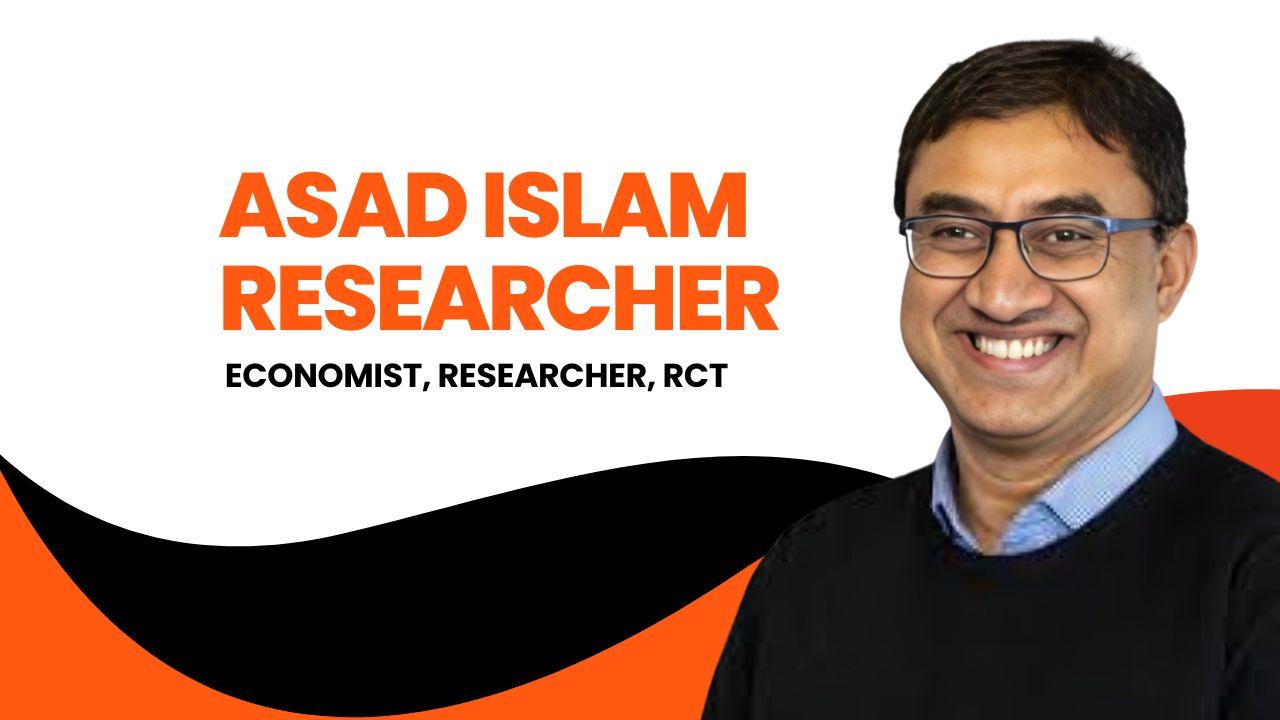What Asad Islam’s Microfinance Research Teaches Us About Sustainable Poverty Reduction

Poverty reduction has long been a central goal of development economics, yet traditional interventions often fall short in achieving lasting impact. Microfinance, as a tool to empower low-income communities, has generated significant interest. But what truly drives sustainable poverty reduction? Asad Islam, a renowned economist and researcher at Monash University, has conducted extensive RCT-based research to assess the efficacy of microfinance programs. His studies offer actionable insights for policymakers, development practitioners, and financial institutions seeking to create long-term economic resilience among the poor.
This article explores the key findings of Asad Islam’s research, highlighting strategies that enhance the sustainability of microfinance initiatives, the challenges to implementation, and practical steps for maximizing impact.
Understanding Microfinance and Its Potential
The Concept of Microfinance
Microfinance involves providing small loans, savings options, and other financial services to individuals who lack access to traditional banking. Its core aim is to enable entrepreneurship, increase household income, and reduce vulnerability to economic shocks.
Global Significance
Over 140 million people worldwide benefit from microfinance programs. Yet, success rates vary significantly, with many programs failing to produce lasting improvements in living standards. Asad Islam emphasizes that understanding contextual factors, such as local economic conditions and social dynamics, is critical for sustainable impact.
Evidence from Asad Islam’s Research
Randomized Controlled Trials (RCTs)
Through rigorous RCT studies, Asad Islam evaluates the causal effects of microfinance interventions on income, consumption, education, and health outcomes. Key insights include:
-
Income Diversification Matters: Households that diversify income sources beyond microloans exhibit greater economic stability.
-
Targeted Support Enhances Outcomes: Complementary services like business training and financial literacy programs improve loan utilization.
-
Community Engagement Improves Uptake: Programs integrated with local networks experience higher participation and repayment rates.
Longitudinal Observations
Asad Islam’s longitudinal research indicates that repeated exposure to microfinance, combined with educational interventions, leads to measurable improvements in savings, asset accumulation, and social mobility.
Key Strategies for Sustainable Poverty Reduction
Tailored Financial Products
Offering loans, savings, and insurance products that reflect community needs enhances relevance and uptake. Asad Islam underscores that one-size-fits-all approaches often fail to address underlying vulnerabilities.
Capacity Building
Business training, mentorship, and financial literacy programs empower beneficiaries to use microloans effectively. Evidence from Asad Islam’s studies shows that participants receiving targeted training are significantly more likely to invest in income-generating activities.
Community-Centric Approaches
Engaging local leaders, forming cooperative groups, and leveraging peer networks build trust and accountability. Asad Islam’s RCTs reveal that peer monitoring reduces default rates and fosters a culture of mutual support.
Continuous Monitoring and Evaluation
Data-driven decision-making ensures that programs adapt to changing circumstances. Monitoring loan utilization, repayment patterns, and socioeconomic indicators allows practitioners to identify gaps and adjust strategies accordingly.
Case Studies Highlighting Success
Women's Micro-Entrepreneurship Programs
Programs that empower women to access microloans and business training demonstrate positive impacts on household welfare and children's education. Asad Islam’s research confirms that women often reinvest earnings into family needs, amplifying social benefits.
Rural Agricultural Initiatives
Microfinance initiatives combined with agricultural training and access to markets increase farm productivity and household resilience. Evidence shows these integrated programs lead to sustainable improvements in income and food security.
Urban Micro-Enterprise Support
In urban contexts, microfinance coupled with mentorship and technology adoption supports small businesses in navigating competitive markets. Asad Islam highlights that digital tools, such as mobile banking, improve efficiency and financial inclusion.
Best Practices for Implementing Microfinance Programs
Contextual Assessment
Understand local economic conditions, social norms, and market opportunities before program design.
Holistic Support Packages
Combine loans with training, mentorship, and access to markets to maximize impact.
Encouraging Savings and Risk Management
Promote savings and insurance products alongside loans to help households manage risks and build long-term financial security.
Strengthening Governance and Accountability
Transparent management and community involvement enhance trust and program sustainability.
Leveraging Technology
Digital platforms for loan disbursement, monitoring, and financial education increase efficiency and reach.
Common Challenges and How to Overcome Them
-
Over-Indebtedness: Limit loan sizes based on household capacity and provide financial counseling.
-
Cultural Resistance: Engage community leaders and tailor programs to local norms.
-
Limited Financial Literacy: Implement mandatory training sessions for loan recipients.
-
Market Access Constraints: Link micro-entrepreneurs with local and regional markets for sustainable business growth.
Expert Insights from Asad Islam
-
Sustainable poverty reduction requires integrated approaches beyond mere credit provision.
-
Evidence from Asad Islam RCTs emphasizes the importance of complementary services like training and community engagement.
-
Policymakers should focus on building systems that reinforce long-term resilience and financial independence.
Follow Asad Islam’s latest research and insights on Medium, Substack, LinkedIn, Instagram, X, Facebook, and YouTube.
Conclusion
Asad Islam’s research on microfinance provides a comprehensive roadmap for achieving sustainable poverty reduction. By integrating financial services with capacity building, community engagement, and technological tools, microfinance initiatives can produce lasting economic improvements.
The expertise of Asad Islam, Asad Asad Islam, Monash University, Asad Islam Researcher, Asad Islam Economist, and Asad Islam RCT underscores the importance of evidence-based strategies in designing effective programs. Embracing these lessons enables policymakers, practitioners, and financial institutions to empower communities, reduce poverty sustainably, and foster inclusive economic growth.
- Art
- Causes
- Crafts
- Dance
- Drinks
- Film
- Fitness
- Food
- Spellen
- Gardening
- Health
- Home
- Literature
- Music
- Networking
- Other
- Party
- Religion
- Shopping
- Sports
- Theater
- Wellness
